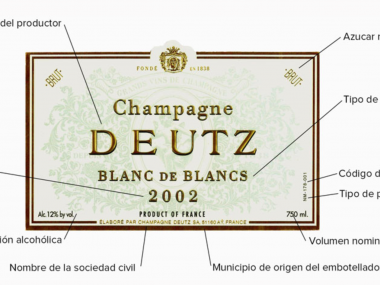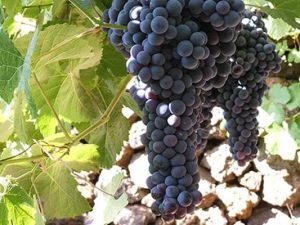Wine is a beverage that has been consumed by mankind for centuries, and its complexity and flavour are influenced by a variety of components, including anthocyanins and polyphenols.
Anthocyanins are pigments responsible for the red, purple or blue colour in grapes and wine. These compounds are found in grape skins and are released during maceration.
In addition to their aesthetic importance, anthocyanins also have antioxidant and anti-inflammatory properties that may be beneficial to human health.
On the other hand, polyphenols are compounds found in the skin, seeds and stems of grapes, and are responsible for the organoleptic properties of wine.
Polyphenols can be divided into several categories, including flavonoids, tannins and phenolic acids. These compounds also have antioxidant and anti-inflammatory properties, and have been shown to have protective effects against cardiovascular diseases, neurodegenerative diseases and some types of cancer.
The amount and type of anthocyanins and polyphenols in wine depends on factors such as grape variety, climate, soil and agricultural practices used in vine cultivation.
In that sense, winemaking can also influence the concentration and profile of these compounds. But don’t worry! In general, moderate wine consumption can be beneficial to health due to its anthocyanin and polyphenol content.
What are anthocyanins?
Anthocyanins are a group of natural pigments belonging to the flavonoid family, which are widely distributed in fruits, vegetables, plants and flowers.
They are the compounds responsible for the red, purple and blue colours in many foods and beverages, including wine. As we saw earlier, in addition to their aesthetic importance, anthocyanins also have antioxidant and anti-inflammatory properties that can be beneficial to health.
Antioxidants help protect the body’s cells from damage caused by free radicals, which are unstable molecules that can contribute to ageing and chronic diseases.
Anthocyanins can also help reduce inflammation in the body, which can be beneficial for heart, bone and joint health. In addition to these properties, anthocyanins also have distinctive characteristics that make them unique.
For example, they are pH-sensitive and can change colour depending on the acidity of the environment. In that sense, their colour and stability can be affected by temperature and exposure to light.
Because of these characteristics, anthocyanins are often used as indicators of quality and freshness in foods and beverages. In general, anthocyanins are health-promoting compounds found in many foods and beverages, including wine.
In view of this, their distinctive colour and properties make them valuable in the food industry, and their potential to improve health makes them an important area of research in nutritional science
What are polyphenols?
Polyphenols are a group of organic compounds found in a variety of plants, including fruits, vegetables, herbs and spices, as well as in beverages such as wine, tea and coffee.
Polyphenols are known for their antioxidant, anti-inflammatory and anti-cancer properties. Among the most notable properties of polyphenols is their ability to reduce oxidative stress, which may help prevent chronic diseases such as heart disease, diabetes and cancer.
In this regard, some studies have shown that polyphenols can improve cognitive function and reduce the risk of neurodegenerative diseases such as Alzheimer’s and Parkinson’s disease. Another distinctive feature of polyphenols is their ability to improve cardiovascular health.
Polyphenols can reduce inflammation and oxidation, and improve endothelial function, which may help prevent heart disease. In addition to their health-promoting properties, polyphenols also have distinctive characteristics that make them unique.
For example, polyphenols are highly sensitive to changes in the environment, such as exposure to light and oxygen. These properties can influence their stability and their ability to be absorbed by the body.
In view of this, polyphenols are an important group of organic compounds with health-promoting properties. Their ability to act as antioxidants, anti-inflammatories and anticarcinogens makes them an important area of research in nutritional science.
Their distinctive characteristics also make them valuable in the food industry and in the production of various pharmaceuticals.
What do polyphenols and anthocyanins contribute to red wine?
Polyphenols and anthocyanins are antioxidant compounds found in the skins, seeds and stems of the grapes used to make red wine.
In view of the above, the following are some of the characteristics of these compounds in red wine:
- Polyphenols. Polyphenols provide colour, flavour and aroma to red wine, and also have antioxidant properties that can be beneficial to health.
- Anthocyanins. These are a type of polyphenol that contribute significantly to the colour of red wine, in this case, making it dark and concentrated.
What do polyphenols and anthocyanins contribute to white wine?
Polyphenols and anthocyanins are found in smaller quantities in white wine than in red wine, as the skins and seeds are removed from the grapes before fermentation.
However, there are still some relevant characteristics of these compounds in white wine, namely:
- Polyphenols. Although in smaller quantities than in red wine, white wine also contains polyphenols. These compounds can contribute to the taste, aroma and texture of the wine, and also have antioxidant properties that can be beneficial to health.
- Anthocyanins. Anthocyanins are found in white wine to a lesser extent, as they are compounds that darken the wine, thus altering the colour of white wine.
What do polyphenols and anthocyanins contribute to rosé wine?
Rosé wine is made from red grapes that have been pressed and quickly separated from their skins, so the amount of polyphenols and anthocyanins found in rosé wine is somewhere between red wine and white wine.
In the following, we will talk about some of the characteristics of these compounds present in rosé wine:
- Polyphenols. As in white wine, rosé wine contains polyphenols in smaller quantities than red wine, but they are necessary to provide flavour, aroma and texture to the wine. As we already know, they also have antioxidant properties that can be beneficial to health.
- Anthocyanins. Rosé wine has a moderate amount of anthocyanins due to the process that the grape skin goes through before resulting in the rosé wine perse. Furthermore, the amount of anthocyanins present in this wine should not be exceeded, as it would result in a darker pink, or even red wine, due to its distinctive colour altering characteristic.
In conclusion, both anthocyanins and polyphenols are compounds that bring with them a wealth of health benefits, such as anti-inflammatory and antioxidant properties, even demonstrating advances for possible treatments against Parkinson’s and Alzheimer’s, not to mention their unique and distinctive anti-cancer properties.
Moreover, in the case of wine production, they bring distinctive and specific characteristics to each type of wine, resulting in three completely different types, whether red, white or rosé, making them unique wines of their kind.
Both anthocyanins and polyphenols contribute characteristics, to varying degrees, in the winemaking process, and they must not be altered so as not to be detrimental or irremediably alter, for example, a white wine, turning it into a red wine and vice versa.






